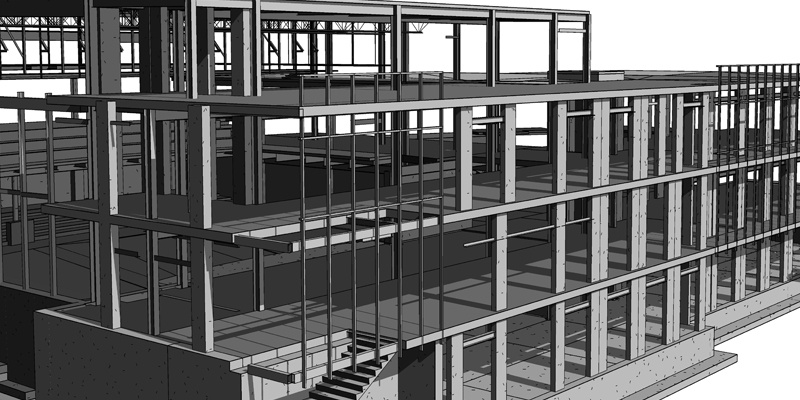In an era where technology rapidly evolves, industries like construction are not exempt from its transformative impacts. Building Information Modeling (BIM) has emerged as a cornerstone technology, revolutionizing how construction projects are planned, designed, and executed. Within BIM, structural modeling services play a crucial role in ensuring the integrity, efficiency, and sustainability of structures. But what exactly does future-proofing entail in the context of BIM structural modeling services, and how can stakeholders leverage this technology to their advantage? Let's delve into these questions.
Understanding BIM Structural Modeling Services
BIM structural modeling services involve the creation of digital representations of a building's structural elements, including beams, columns, slabs, and foundations. These models serve as a comprehensive database of information that goes beyond just geometry. They encapsulate material properties, structural behavior, and other pertinent data essential for the design, analysis, and construction phases of a project.
Enhanced Collaboration and Coordination
One of the primary advantages of utilizing BIM structural modeling services is improved collaboration and coordination among project stakeholders. Unlike traditional 2D drawings, BIM models offer a three-dimensional, data-rich environment where architects, engineers, contractors, and other parties can collaborate in real-time. This fosters greater transparency, reduces errors, and minimizes conflicts during the construction process.
Early Detection of Design Conflicts
Design conflicts can be costly and time-consuming to rectify if discovered during the construction phase. BIM structural modeling services enable early detection of such conflicts by facilitating clash detection analyses. Through virtual simulations, potential clashes between structural elements, mechanical systems, and architectural components can be identified and resolved before construction commences, saving both time and resources.
Optimized Structural Design
BIM structural modeling allows engineers to explore various design alternatives and analyze their performance under different scenarios. By simulating load conditions, material properties, and environmental factors, engineers can optimize structural designs for efficiency, durability, and sustainability. This iterative process helps in creating cost-effective solutions that meet project requirements while adhering to industry standards and regulations.
Seamless Integration with Analysis Software
BIM structural models can be seamlessly integrated with various analysis software, allowing engineers to perform advanced structural analyses with ease. Finite Element Analysis (FEA), structural dynamics, and other simulations can be conducted directly within the BIM environment, enabling engineers to evaluate the structural performance and behavior of a building comprehensively. This integration streamlines the design process and enhances decision-making capabilities.
Improved Construction Sequencing and Planning
BIM structural modeling services facilitate the creation of detailed construction sequencing and planning schedules. By visualizing the construction process virtually, project teams can identify potential bottlenecks, optimize resource allocation, and streamline workflows. This level of detail enhances project predictability, reduces construction delays, and improves overall project efficiency.
Enhanced Facility Management and Maintenance
The benefits of BIM structural modeling extend beyond the construction phase to the operational lifecycle of a building. The rich data embedded within the BIM models can be leveraged for facility management and maintenance activities. Asset information, maintenance schedules, and as-built documentation can be easily accessed, allowing facility managers to make informed decisions, optimize maintenance routines, and prolong the lifespan of the structure.
Integration with Emerging Technologies
Future-proofing construction projects involves staying abreast of emerging technologies and trends. BIM structural modeling services are increasingly being integrated with other cutting-edge technologies such as augmented reality (AR), virtual reality (VR), and reality capture techniques like LiDAR. These integrations enable stakeholders to visualize projects in immersive environments, conduct on-site inspections remotely, and capture accurate as-built data for future reference.
Adapting to Regulatory Changes and Sustainability Standards
As regulatory frameworks evolve and sustainability standards become more stringent, BIM structural modeling services provide a platform for compliance and optimization. By incorporating environmental analysis tools, energy performance simulations, and life cycle assessments into the BIM workflow, project teams can ensure that structures meet the required sustainability criteria while minimizing their environmental footprint.
Conclusion
Future-proofing construction projects through BIM structural modeling services involves harnessing technology to optimize efficiency, collaboration, and sustainability throughout the project lifecycle. By leveraging the capabilities of BIM, stakeholders can achieve better outcomes in terms of design quality, construction accuracy, and facility management. As the construction industry continues to evolve, embracing BIM structural modeling services will be essential for staying competitive and delivering successful projects in the digital age.


No comments yet